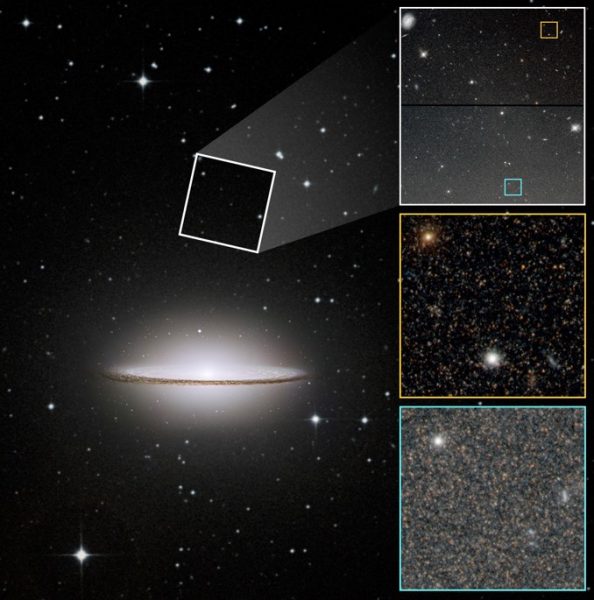Hubble sheds light on the Sombrero galaxy’s surprising past – Astronomy Now Online

Surprising new data from NASA’s Hubble Space Telescope suggests the smooth, settled “brim” of the Sombrero galaxy’s disk may be concealing a turbulent past. Hubble’s sharpness and sensitivity resolves tens of thousands of individual stars in the Sombrero’s vast, extended halo, the region beyond a galaxy’s central portion, typically made of older stars.
These latest observations of the Sombrero are turning conventional theory on its head, showing only a tiny fraction of older, metal-poor stars in the halo, plus an unexpected abundance of metal-rich stars typically found only in a galaxy’s disk, and the central bulge. Past major galaxy mergers are a possible explanation, though the stately Sombrero shows none of the messy evidence of a recent merger of massive galaxies.
“The Sombrero has always been a bit of a weird galaxy, which is what makes it so interesting,” said Paul Goudfrooij of the Space Telescope Science Institute. “Hubble’s metallicity measurements (the abundance of heavy elements in the stars) are another indication that the Sombrero has a lot to teach us about galaxy assembly and evolution.”
“Hubble’s observations of the Sombrero’s halo are turning our generally accepted understanding of galaxy makeup and metallicity on its head,” added co-investigator Roger Cohen of STScI.
Long a favourite of astronomers and amateur sky watchers alike for its bright beauty and curious structure, the Sombrero Galaxy (M104) now has a new chapter in its strange story — an extended halo of metal-rich stars with barely a sign of the expected metal-poor stars that have been observed in the halos of other galaxies.
Researchers, puzzling over the data from Hubble, turned to sophisticated computer models to suggest explanations for the perplexing inversion of conventional galactic theory. Those results suggest the equally surprising possibility of major mergers in the galaxy’s past, though the Sombrero’s majestic structure bears no evidence of recent disruption. The unusual findings and possible explanations are published in the Astrophysical Journal.
“The absence of metal-poor stars was a big surprise,” said Goudfrooij, “and the abundance of metal-rich stars only added to the mystery.”
In a galaxy’s halo astronomers expect to find earlier generations of stars with less heavy elements, called metals, as compared to the crowded stellar cities in the main disk of a galaxy. Elements are created through the stellar “lifecycle” process, and the longer a galaxy has had stars going through this cycle, the more element-rich the gas and the higher-metallicity the stars that form from that gas. These younger, high-metallicity stars are typically found in the main disk of the galaxy where the stellar population is denser — or so goes the conventional wisdom.
The results … defied expectations, indicating that the unperturbed Sombrero had undergone major accretion, or merger, events billions of years ago. Unlike our Milky Way galaxy, which is thought to have swallowed up many small satellite galaxies in so-called “minor” accretions over billions of years, a major accretion is the merger of two or more similarly massive galaxies that are rich in later-generation, higher-metallicity stars.
The results for the Sombrero are surprising because its smooth disk shows no signs of disruption. By comparison, numerous interacting galaxies, like the iconic Antennae galaxies, get their name from the distorted appearance of their spiral arms due to the tidal forces of their interaction. Mergers of similarly massive galaxies typically coalesce into large, smooth elliptical galaxies with extended halos — a process that takes billions of years. But the Sombrero has never quite fit the traditional definition of either a spiral or an elliptical galaxy. It is somewhere in between — a hybrid.





